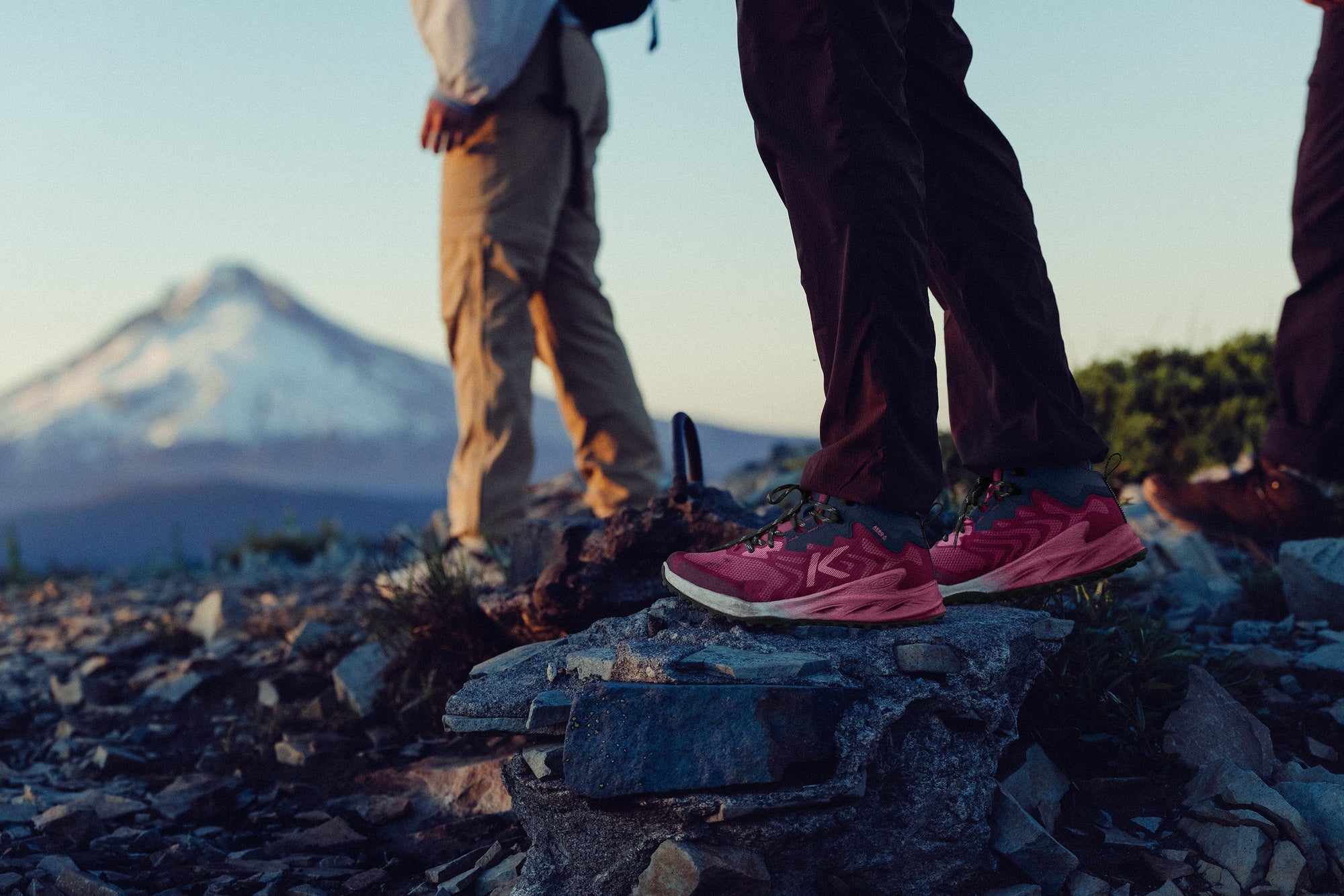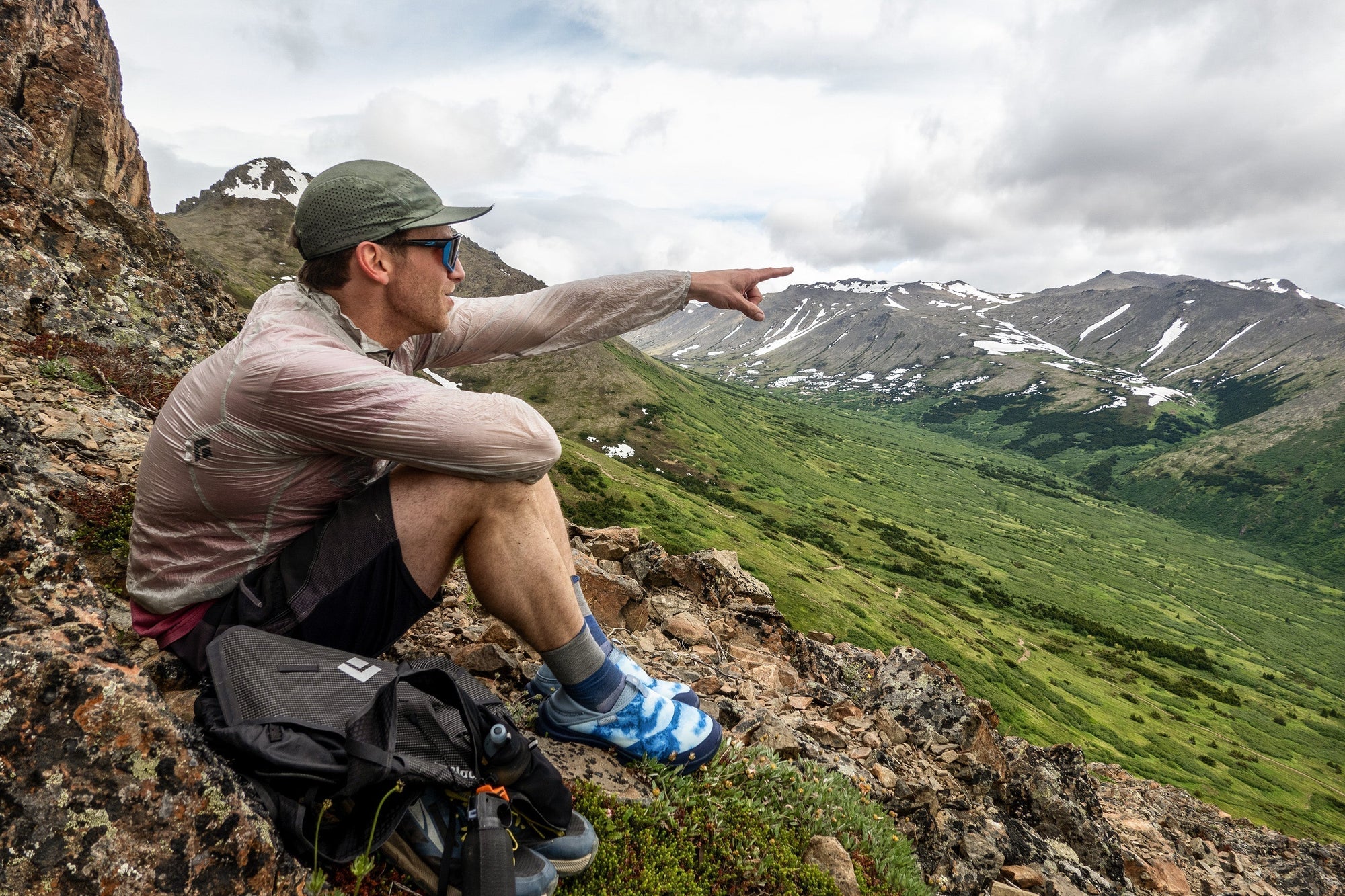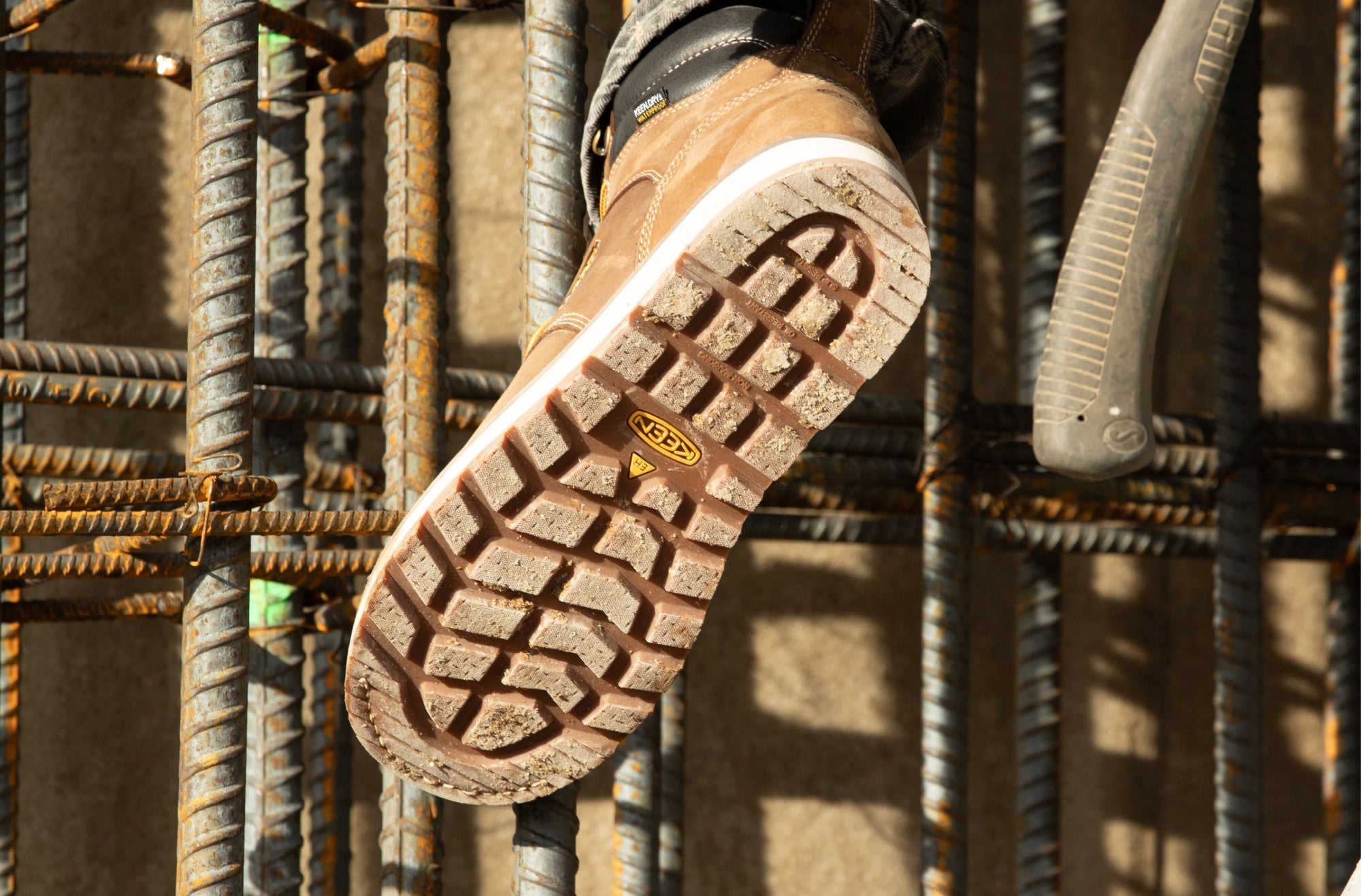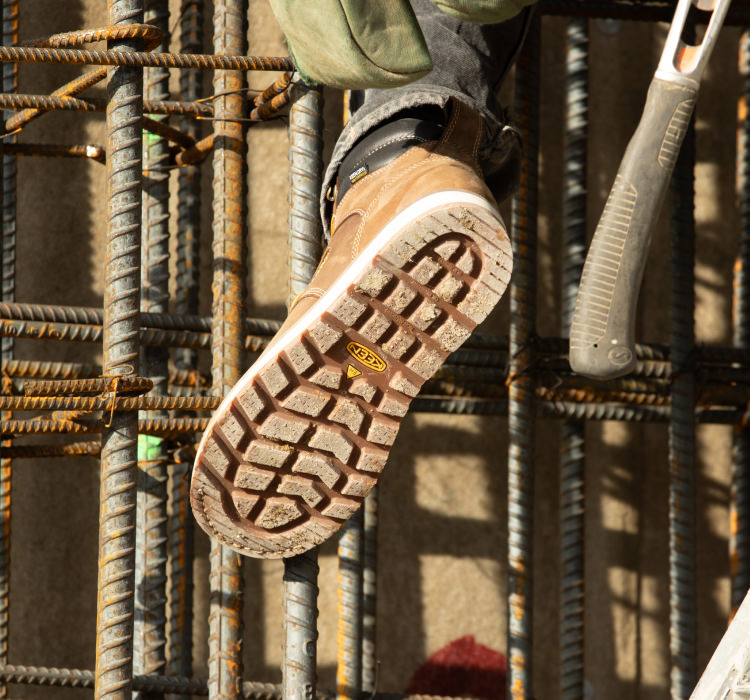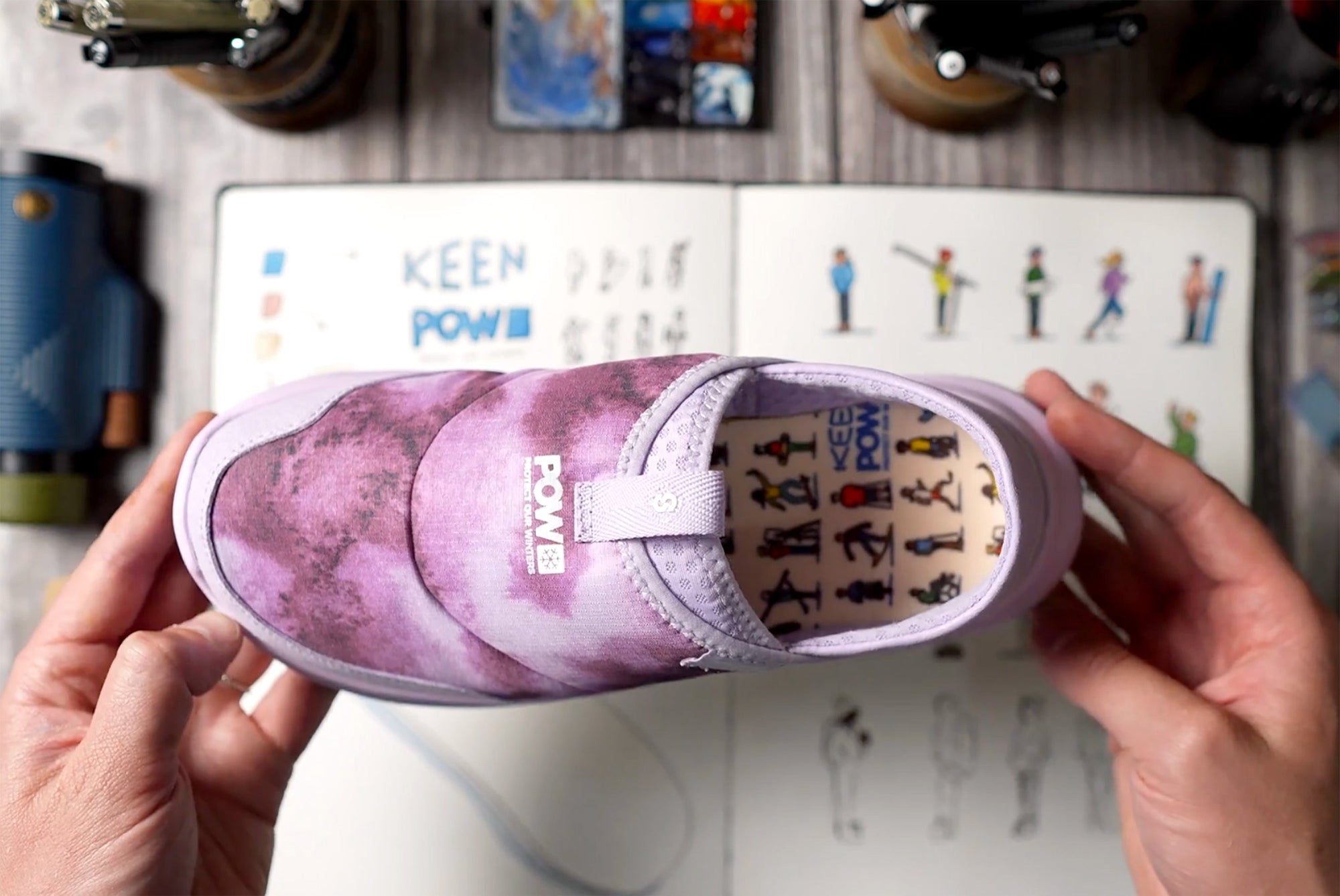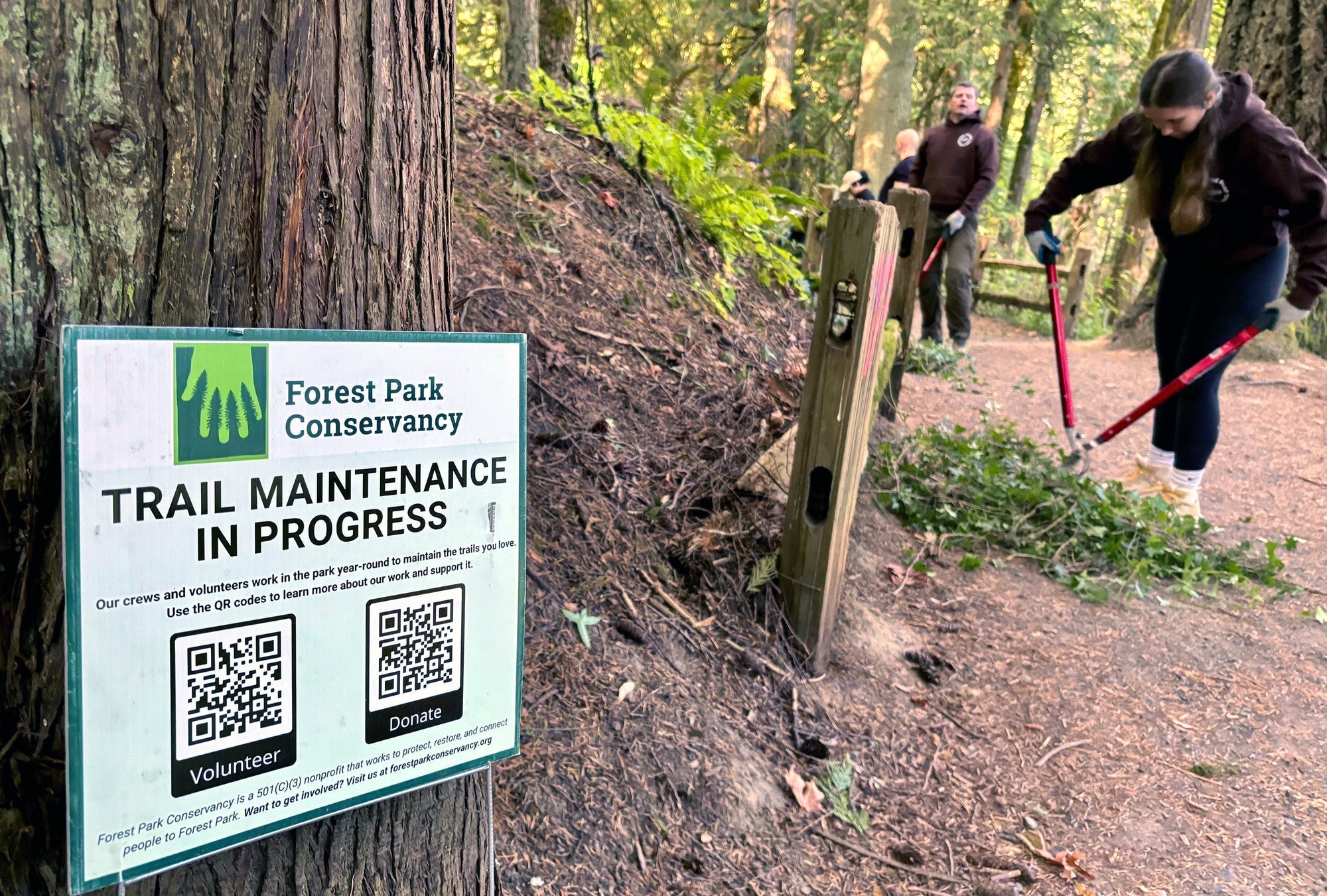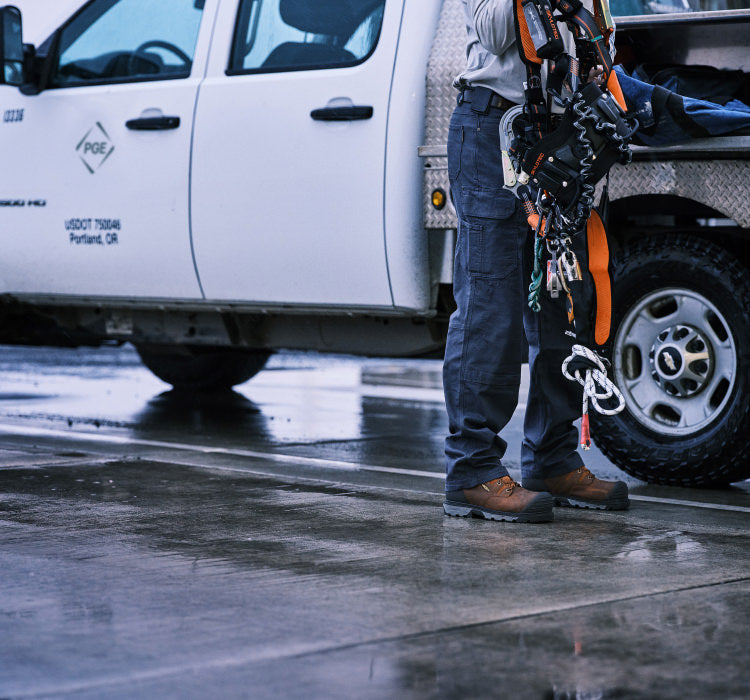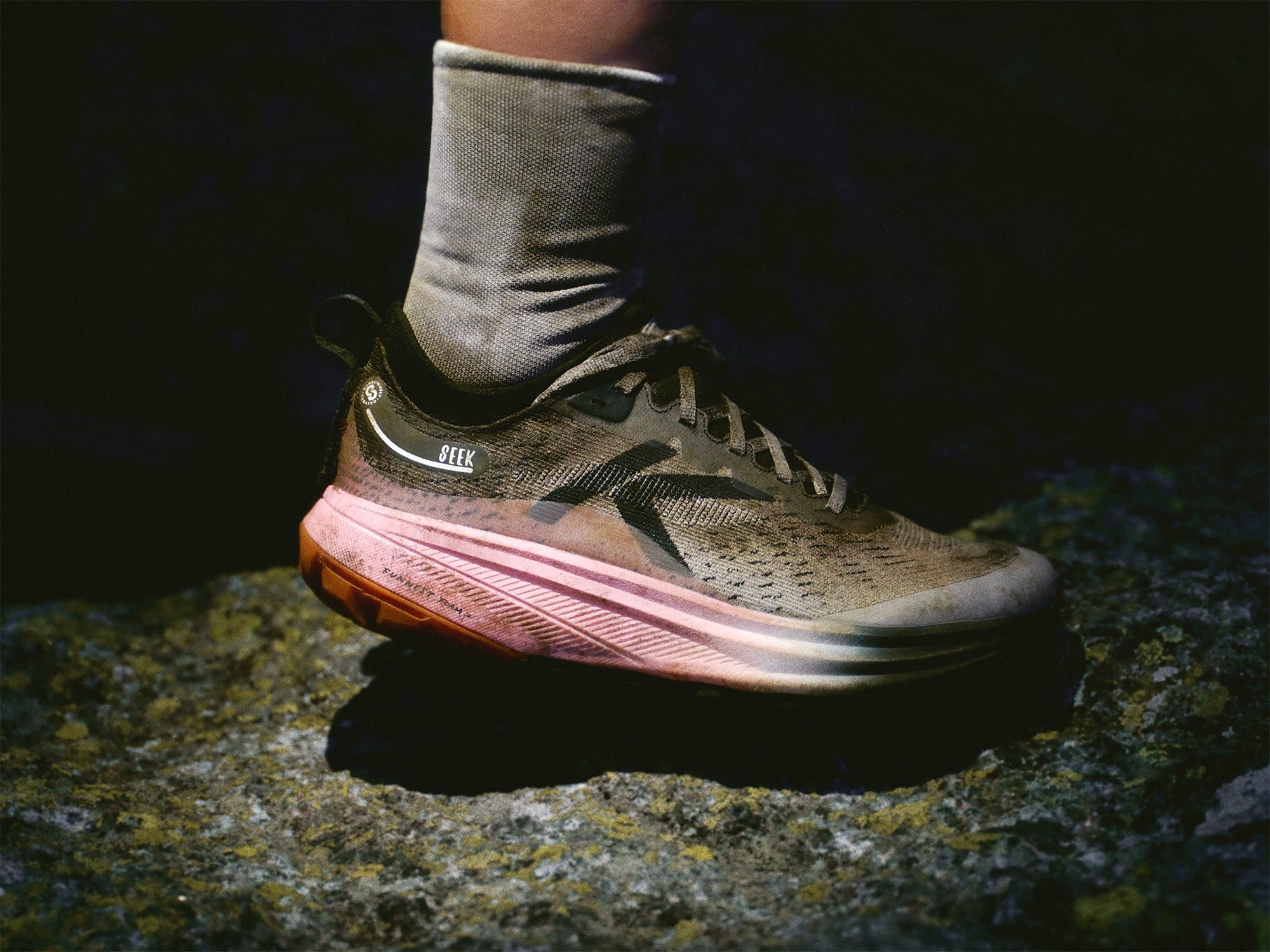Have you ever wanted to try windsurfing? You know, that watersport that’s like surfing plus sailing?
There are all kinds of watersports gaining in popularity these days: kiting, wingsurfing, foiling, and we've even seen some folks windSUPing here on the Willamette River in Portland. Windsurfing is the OG wind sport, and it’s a real full-body workout that builds balance and core strength. Also, because you start off on a big board and a small sail, you can be sailing back and forth with help in the first hour and on your own within a few hours. You can also do it in all kinds of bodies of water: on rivers and lakes, and even the ocean. But to try it, you have to go where the wind is.
Luckily for us, the KEEN HQ in Portland is just about an hour’s drive away from one of the sweetest windsurfing spots in the whole country. Hood River, Oregon, is a dream destination for windsurfing enthusiasts. That’s because the Columbia River Gorge acts as a funnel for wind, with regular speeds of 25-35+ mph out on the water. (One of our KEENmates in Portland used her KEEN wellness reimbursement to take windsurfing lessons here on a windy day and had a blast! Pun intended.)
To learn more about testing the windsurfing waters, we talked to an expert: our friend, Sean Aiken. He’s been dedicated to the sport since he was a teen and has competed in wave and freestyle categories in windsurfing competitions in Oregon, California, Mexico, and Hawaii. He’s also on the board of the Columbia Gorge Wind and Water Association. They provide beach access and cleanups, and they host programs that get kids and families involved in wind and watersports.
Sean told us all about the most important things to know before you head out on the water:
It's Tons of Fun for Older Kids
Sean started windsurfing at age 12, and now he teaches his own kids; his son has been getting out there since about age nine. In general, older kids will probably have more success than younger kids, since you need to have a certain amount of strength to be able to control your own board.
Sean compares it to a sport like mountain biking. He says, “I think it’s a great family sport, but once you’re out there, I think of it as more of an individual sport, since you each have your own set up and will sail your own course. But sailing together and sharing experiences with your friends and family really is the best part.”
Younger and less experienced kids can try it in a more protected area first (think lakes), then graduate to the river or ocean.
There's a Bunch of Gear
Kind of like skiing, windsurfing requires the perfect spot, the right weather conditions, and a fair amount of gear.
Sean recommends a wetsuit that’s warm enough for the water you’re planning on getting into. Beyond the wetsuit, you need a board, a mast, and a mast base. You’ll also need two or three sails (because different wind conditions call for different sails) and a boom (which is the part you hang onto). You might also opt for a helmet (especially for kids). And you won’t need it right away, but once you move beyond the beginner stage, you’ll also want a harness. All this stuff can be bought new or used, but if you're just testing the waters of windsurfing, it's easy to rent all the gear you need too. If you do buy your gear, you’ll also need a roof rack and strap to drive it to the water.
Out on the board, you don’t wear shoes (some people wear wetsuit boots, but most just go barefoot). On the shore, sailing/water shoes like Newport sandals are popular for toting gear and prepping. (Out on the Hood River waterfront, you’ll see lines of shoes patiently waiting for their wearers to return.)
Take Safety Seriously
The most critical thing you need to know first: how to swim. You don’t need great technique, but you do need to be a decent swimmer. It’s also important to have a basic understanding of currents in a river (and in the ocean, if you’re surfing there). Beware of currents!
What are the risks? Ankle and foot injuries, or being hit in the head by the mast (which doesn’t happen a lot, but it does happen). And out on the water, there’s always the risk of colliding with a boat (or another windsurfer). That’s why some windsurfers wear helmets.
Do you need a life jacket? Most windsurfers don’t wear them, because sometimes you need to be able to dive and swim under the surface of the water (that’s why swimming skills are so crucial!). But for beginners and kids, you can play it safe and start out with a life jacket!
But one thing you definitely need is sun protection: bring plenty of waterproof, high-SPF sunscreen and maybe a hat and sunglasses (with cords to keep you from losing them).
One more thing to keep in mind? Water pollution. Sean points out that water can vary so much in cleanliness from spot to spot, and it’s always good to train your kids (and yourself) to clear water out of the nose and mouth as soon as possible (no drinking the water, kids).
Learn From a Pro
Sean Aiken harnessing the Hood River wind
Can you teach yourself to windsurf? Technically, yes, but because of the complexity and the risks involved, it’s best to sign up for a class. You’ll learn about wind direction and how to pull the sail up off the water. (Sean notes that if you have a sailing background already, you might be in a better position to teach yourself.)
In Hood River, several of the local shops offer lessons in everything wind/water/board related. He says you can get the hang of the basics in a few hours, but expect to go 10+ times to really get the full effect. “Time is really the most important thing. It takes time and flexibility to make the effort when the wind is blowing, because the wind doesn’t always blow when you want it to.”
Just like skiing or surfing, there’s a time investment that eventually pays off. “It is challenging, and you never stop learning,” says Sean. “The key to progressing is practice, practice, practice, plus guidance.”
Once you’ve got the basics down, you’ll be able to get out there on your own and practice. For example, the Columbia Gorge Wind and Water Association offers a program where you can buy an annual pass for the whole family and get access to a self-serve trailer full of rigged sails and gear. It’s everything you need to get on the water: from wetsuits to harnesses, helmets, rigged sails, and boards of all types.
Use the Lingo
Is there insider lingo? Oh, yeah. Windsurfing slang is a universe unto itself (furry in the puffs? voodoo-chop? teaser breeze?) — but let’s start at the beginning. Here’s some of the terminology you can expect to learn in your initial class (and if you have any sailing experience, some of these terms may look familiar to you):
Rig: The whole contraption you use (in conjunction with a board) to sail. This includes the sail, mast, boom, and harness.
Boom: The part of your rig you hold on to; the “handlebars,” so to speak.
Uphaul: A rope that attaches to the boom. It’s also a verb, meaning to use that rope to pull yourself up to a sailing position in the water.
Waterstart: A waterstart means using the power of the wind to put you in a vertical sailing position (rather than your uphaul rope).
Sheeting in: Pulling the sail in towards you.
Jibe: Turning in the downwind direction while switching sides of the board.
Tack: Turning in the upwind direction and switching sides on the board. “Tack” also refers to your direction of travel; going to the right side with your right foot forward is “starboard tack,” and heading left with your left foot forward is “port tack.”
The final tip? According to Sean, windsurfing is a unique sport that people seem to get addicted to — so don’t be surprised if you find yourself hooked after a few sessions on the water!





